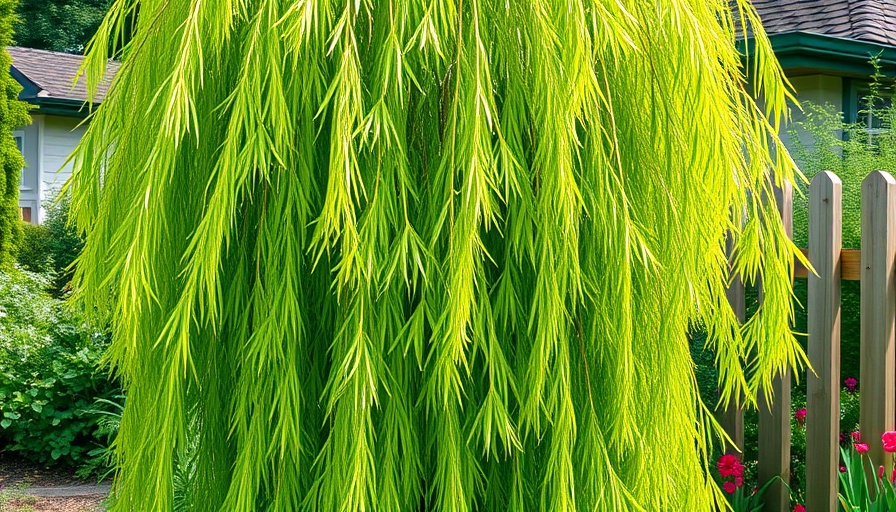
Discovering Scouler’s Willow: A Keystone Plant for PNW Gardens
For homeowners and gardening enthusiasts in the Pacific Northwest (PNW), the Scouler’s willow, also known scientifically as Salix scouleriana, stands out as an exceptional keystone plant. This native species not only adds beauty to gardens but also plays a crucial role in supporting local ecosystems. Let's dive deeper into why this plant should be on your gardening radar.
The Ecological Significance of Scouler’s Willow
One of the distinguishing features of Scouler’s willow is its ability to support biodiversity. As a native plant, it has evolved alongside numerous local species, providing a habitat for wildlife that exotic species simply can't replicate. Doug Tallamy, a noted ecologist, highlights how native plants, including Scouler's willow, serve as food sources and support systems for local caterpillar populations. These caterpillars, in turn, feed birds, thus creating a balanced ecosystem that fosters rich biodiversity.
Benefits of Planting Scouler’s Willow in Your Garden
Aside from its ecological contributions, Scouler’s willow is a visually appealing addition to any landscape. Its attractive form and lush foliage can enhance the aesthetic appeal of gardens, particularly as part of hedgerows or riparian plantings. Additionally, it is known for its ability to stabilize soil, making it a practical choice for areas prone to erosion. Homeowners looking to improve their landscape while contributing positively to their environment should consider its benefits.
How to Cultivate Scouler’s Willow in Your Home Garden
Cultivating Scouler's willow is easier than many might anticipate. The plant thrives in a variety of settings but prefers moist, well-drained soils. It can tolerate both sun and partial shade, allowing for flexibility in landscaping design. When planting, ensure sufficient space for growth—Scouler's willow can reach heights of up to 30 feet. Regular pruning is recommended to manage shape and encourage lush growth, particularly in more confined garden spaces.
Future Insights: The Role of Keystone Plants in Climate Resilience
As environmental concerns continue to grow, necessary shifts in landscaping and gardening practices are essential. By integrating keystone plants like Scouler's willow into home gardens, residents can contribute to climate resilience. The ability of native plants to adapt to local climate conditions means they are often hardier and require fewer resources, such as water and fertilizers, compared to traditional ornamental plants. This is not only economically beneficial to homeowners but also contributes to conserving local ecosystems.
Frequently Asked Questions About Scouler’s Willow
1. Will Scouler’s willow attract beneficial insects? Yes, its flowers attract not only pollinators like bees but also various insect species that combat pests naturally.
2. Can I grow Scouler's willow in containers? While best suited for gardens, smaller varieties of willows can thrive in larger containers if ample sunlight and moisture are available.
3. Is Scouler’s willow suitable for shaded areas? Though it prefers sun, Scouler’s willow can tolerate partial shade, making it versatile for different garden layouts.
Incorporating Scouler’s willow into your garden not only benefits the environment but also enhances your outdoor living space. As the awareness around native plants grows, now is the perfect time for homeowners to make a sustainable choice that reflects their dedication to local ecosystems.
To learn more about creating sustainable gardens and enriching local biodiversity, start with native plants like Scouler's willow. They are more than just plants; they're part of a bigger vision for a healthier planet.
 Add Row
Add Row  Add
Add 




Write A Comment